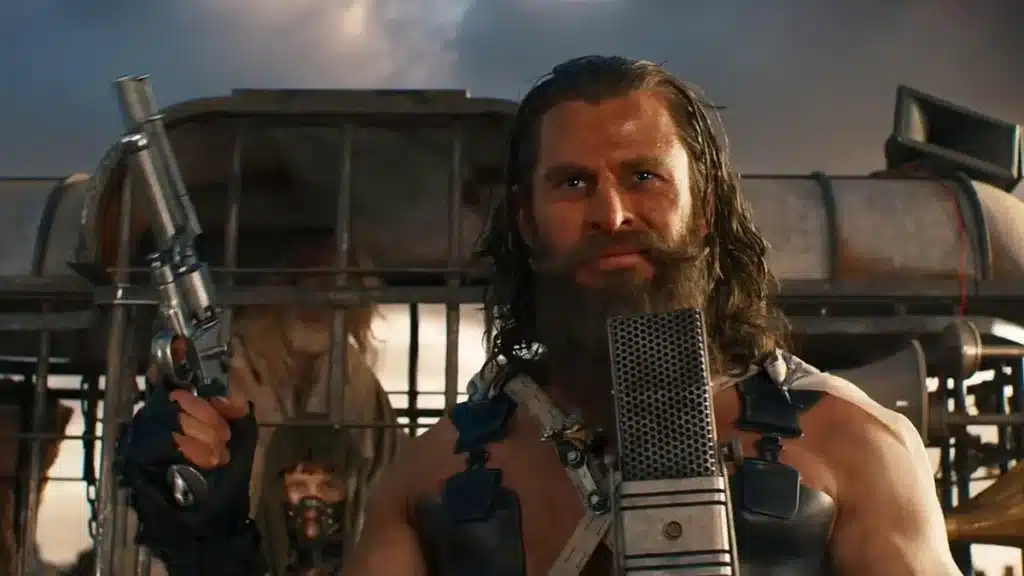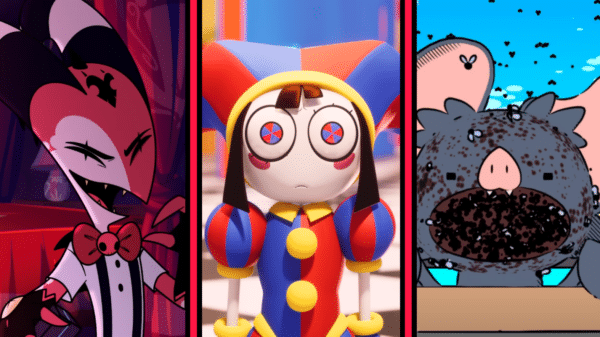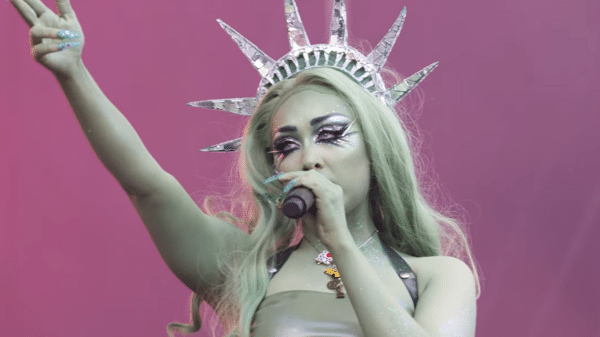Mad Max: Fury Road was undeniably one of most ambitious action films of the decade. The film is a vibrant, frenetic and creatively disturbing take on a post-apocalyptic action flick, utilizing almost entirely practical effects. Furiosa: A Mad Max Saga offers something completely new for the franchise; delivering an epic rather than a concise two-day car chase, and excluding the titular “Max” completely.
Warning for spoilers ahead before we dive into all of the elements of George Miller’s newest entry in the Mad Max saga, and examine where it went right—and where it went wrong. The question is, does this film live up to its predecessor? And is it worth seeing on the big screen?
Story and Character

The film opens on a young Furiosa as she is stolen from The Green Place of Many Mothers where she has grown up. Her mother dies in an attempt to rescue her, leaving her imprisoned by the warlord Dementus, played by Chris Hemsworth. We follow Furiosa from child to adult as she relentlessly pursues her goal of getting revenge and returning home.
Furiosa builds on Fury Road as it delves more into fully fleshing out its characters. While Charlize Theron gives a great performance in Fury Road, we are rarely let in on her emotions or motivations.
Furiosa is portrayed beautifully by young actress Alyla Browne in the first half of the film. Browne stares down the camera with unrelenting rage and fervor, delivering an emotionally charged performance with few words. Furiosa’s character is at first only a child, kidnapped as a result of her foolish whims. She is not infallible or invulnerable, she shows genuine emotion and weakness. Her cleverness even as a child and persistent fearlessness and grit makes her incredibly sympathetic.
Many films with this type of ‘badass female heroine’ archetype fall into the trope of making her emotionally empty and virtually untouchable. Furiosa does not make this mistake; its titular character is able to grow and evolve, show rage and weakness as well as strength. Anya Taylor Joy continues this portrayal seamlessly in the second half of the film.
In general, character depth is where this film shines. Its main villain, Dementus, is given unexpected nuance. After losing his family, he has turned cold and heartless towards the world. However, his humanity is still there, if buried; displayed effectively by the teddy bear he carries which once belonged to his child. In the end, he gives a speech to Furiosa about the nature of revenge which reveals a new perspective for the franchise.
This film, unlike Fury Road, seeks to sympathize with the inevitable grey area of morality in a post apocalyptic wasteland. The film examines the psychological consequences of living in a depraved and cruel world, where everyone faces pain and grief. It deconstructs revenge as a means of gratification, subverting viewers existing ideas of good and evil in this universe.
Themes and Visual Worldbuilding

Both of Miller’s recent films leap headfirst into creatively deranged world-building, and visually this film only amps up the striking, high contrast visuals. Furiosa utilizes zoom as a means of conveying tension and character perspective, while making the film more fittingly over-dramatic and campy.
Several scenes also feature a jittery, fast-forwarded stop motion effect. This effect is unnerving and overstimulating in a way that perfectly encapsulates the film’s energy. While most major action franchises seem to shy away from fantastical theatrics or artistic details, this film sets itself apart.
Each prop and costume on screen perfectly represents the characters and defines the world they inhabit. Similar to Fury Road, the costume and set pieces blend steampunk, fetish gear and wasteland aesthetics to create something entirely singular. Characters wear gas masks as cod pieces, and helmets made from bones. Every costume features some sort of leather, bondage piece or mechanic detail, showing both the depravity and the thematic prevalence of machinery and disconnection from the natural world. We are witnessing a master class in production design, arguably even more well developed in this film than its predecessor.
Biblical symbolism is present throughout Furiosa, most significantly in Furiosa’s kidnapping after plucking a peach from a tree (in what is essentially this universe’s ‘eden’) and her mother being crucified. The film portrays the women of her homeland, The Green Place of Many Mothers, as martyrs and enlightened people, protecting something sacred.
Furiosa carries with her throughout her life a seed, given to her by her mother to protect. She plants the seed over the body of Dementus at the end of the film. This perhaps suggests a theme of the female power of creation and (and its thus connection to the natural world) in a wasteland ruled by men. Essentially, Furiosa thoughtfully engages with similar themes to its veritably feminist predecessor.
The Bad

Where this film stumbles as opposed to its predecessor is in its exposition, action sequences, and dialogue. This film uses significantly more dialogue exposition than Fury Road. Furiosa lingers on moments of verbal explanation and character introductions which one could omit in favor of visual cues. In Fury Road, viewers enter into a grotesque and feverish nightmare, and must piece together the picture based on visual world building alone. Characters are not formally introduced, major conflicts are not explained; the film conveys what is necessary through meaningful visual moments.
In addition, dialogue itself feels over-used in this film. This isn’t to say that the dialogue isn’t well written. Dementus is refreshingly fanciful and verbose, and delivers some of the wittiest dialogue in the film.
However, the first film succeeded in making its characters sympathetic and allowing the viewer to understand exactly who they are in few words. Emotional moments were usually memorable for their resounding visuals and intense sound design. When the film does utilize dialogue, it feels intentional and earned, resonating more powerfully with the audience. Not to mention, the first film is chock-full of memorable dialect quirks that enhance the viewers immersion. This charming quality is all but lost in Furiosa.
In Furiosa, conflicts are often explained when reliance on visual cues would be more effective and less confusing. Dialogue interjects when silent displays of emotion would be more poignant. Some scenes avoid this; such as the scene where Dementus finds Furiosa and Jack, her ally and lover. Furiosa watches as Jack’s body is dragged in circles around her by motorcycles in one of the most devastating images of the film. In this scene, the actors say few words; they convey desperation, defeat and hopelessness in their strained breaths.
In contrast to this is the final scene between Furiosa and Dementus. Dementus wakes in the desert to find his ammunition stolen and his water drained. He turns and sees Furiosa, glowing in the sunlight like a goddess on the hill above. This is powerful; the audience can feel what she feels in her silence, can revel in his powerlessness.
The immersion breaks as the film goes on to show Furiosa screaming at Dementus to give back her mother and her childhood. Were this another movie perhaps this would illicit more emotion, but it truly just misunderstands what made Fury Road so impactful. This overt dialogue feels terribly out of place.
Finally, the Furiosa crafts engaging action sequences, but never quite reaches the same highs as Fury Road. Actions scenes are more sparse and feel at times drawn out. The film paces itself more like a traditional action flick than the high stress, relentless fever dream many fans will come expecting.
Conclusion

All in all, Furiosa is a great film; an action-packed epic that continues and expands on the Mad Max universe. It is absolutely dazzling with vibrant cinematography and elaborate set pieces, and is absolutely worth experiencing on the big screen.
However, I would argue that the film doesn’t necessarily live up to Fury Road. It doesn’t quite retain the same constant high tension or subtleties in storytelling that make the first so incredible. Regardless, it stands alone as a strong entry in the series and tells an undeniably captivating story.













